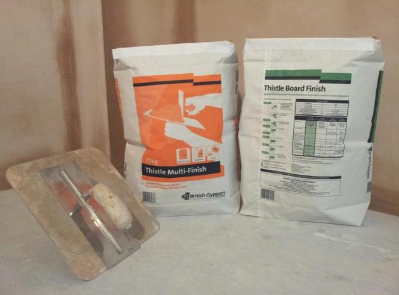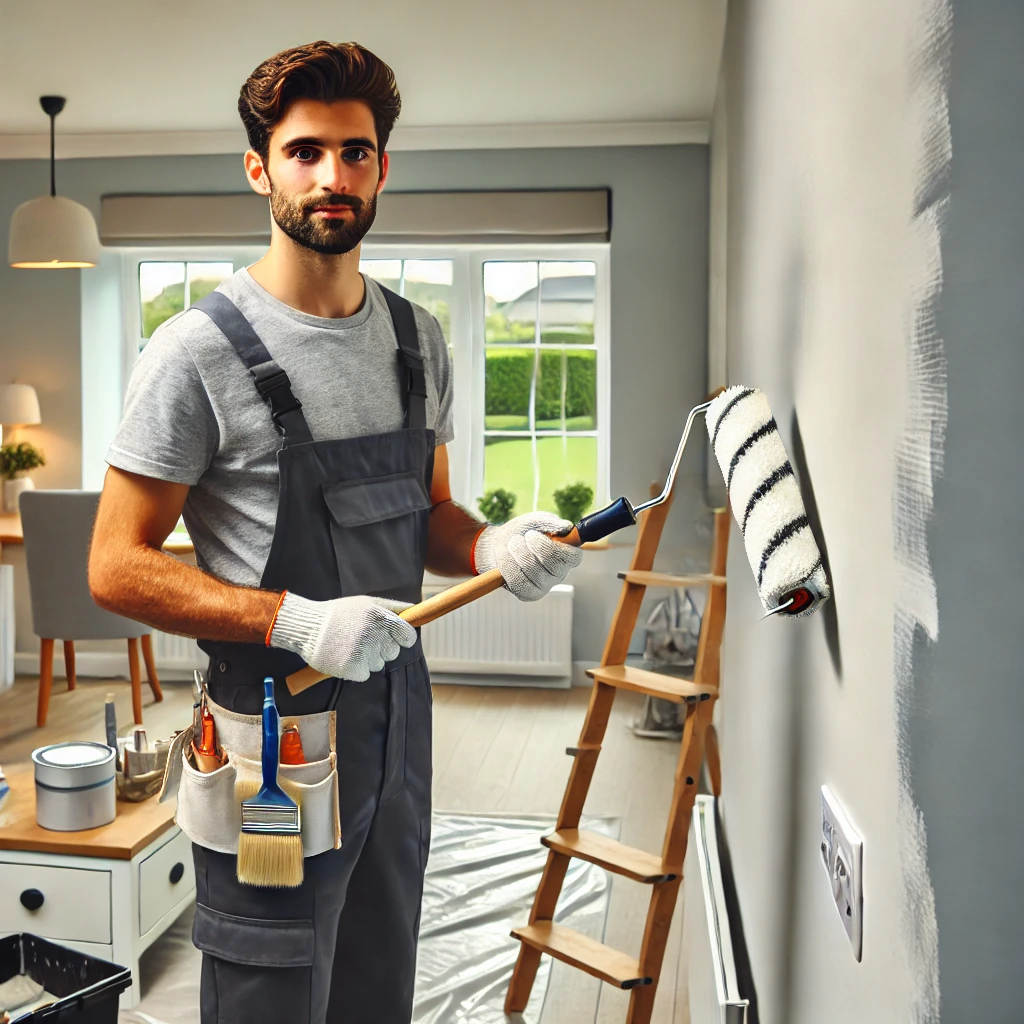As a plasterer here in Bournemouth with over 20 years on the tools, one of the most common questions I get asked by homeowners and even younger tradesmen is:
“What’s the difference between Board Finish and Multi Finish?”
It’s a fair question, because when you walk into your local builders’ merchant you’ll often see both bags sitting side by side on the shelf. They look similar, they both do the same basic job – creating a smooth surface ready for paint or wallpaper – but there are some important differences that will affect the end result and how easy the job is for you.
Let’s break it down.
What is Board Finish?
Board Finish is a gypsum-based plaster specifically designed to go straight onto plasterboard surfaces.
- It’s very smooth and fine, which makes it great for achieving a first-class finish.
- It has a slightly shorter setting time compared to Multi Finish (usually around 1.5–2 hours, depending on conditions).
- It’s more forgiving on new boards because it’s formulated to spread easily and give that clean, glass-like finish people expect.
When I use it:
If I’m skimming over new plasterboard – whether it’s a fresh extension in Southbourne, a loft conversion in Charminster, or a re-boarded ceiling in Westbourne – I’ll almost always go for Board Finish. It’s designed for that job, and you get a nicer, tighter result.
What is Multi Finish?
Multi Finish is more of a general-purpose plaster.
- It’s versatile and can go on a variety of backgrounds, including old walls that have been bonded out, Artex, or patch repairs.
- It has a slightly longer setting time (2–2.5 hours typically), which gives you a bit more working time on larger areas.
- The texture isn’t quite as fine as Board Finish, but in skilled hands you’ll still get a perfect finish ready for paint.
When I use it:
If I’m working in one of Bournemouth’s many Victorian houses in places like Pokesdown or Boscombe, where walls are often uneven or patched with different materials, Multi Finish is the safer bet. It can handle all sorts of surfaces without the risk of blistering or patchy setting.
Key Differences at a Glance
| Feature | Board Finish | Multi Finish |
|---|---|---|
| Best Surface | New plasterboard | Multiple surfaces (bonding, old plaster, Artex, etc.) |
| Setting Time | 1.5–2 hours (quicker) | 2–2.5 hours (slower, more working time) |
| Finish | Extra smooth, tighter finish on boards | Slightly coarser but still smooth |
| Versatility | Limited – only for plasterboard | Very versatile – works on most backgrounds |
| Ease of Use | Spreads beautifully on new boards | Handy for mixed or older surfaces |
My Professional Advice
If you’re a DIYer putting up a few plasterboards in your home here in Bournemouth, Board Finish is your best choice – it’s tailored for that surface and gives excellent results.
If you’re dealing with mixed backgrounds, patchy walls, or you’re not sure what’s underneath, Multi Finish is more reliable. It gives you flexibility and won’t let you down when the surface isn’t perfect.
For me, after 20 years on the job, it comes down to experience:
- Fresh boards = Board Finish.
- Mixed or older walls = Multi Finish.
Simple as that.
At the end of the day, both Board Finish and Multi Finish are great products – it’s just about using them in the right situation. Get it right, and you’ll end up with walls and ceilings that are smooth, solid, and ready for decorating.
And if you’re not confident tackling it yourself, give a professional a call. I’ve spent two decades skimming, floating, and finishing all over Bournemouth and the surrounding area – and there’s nothing better than leaving a job knowing the customer is walking into a room with perfect, freshly plastered walls.

